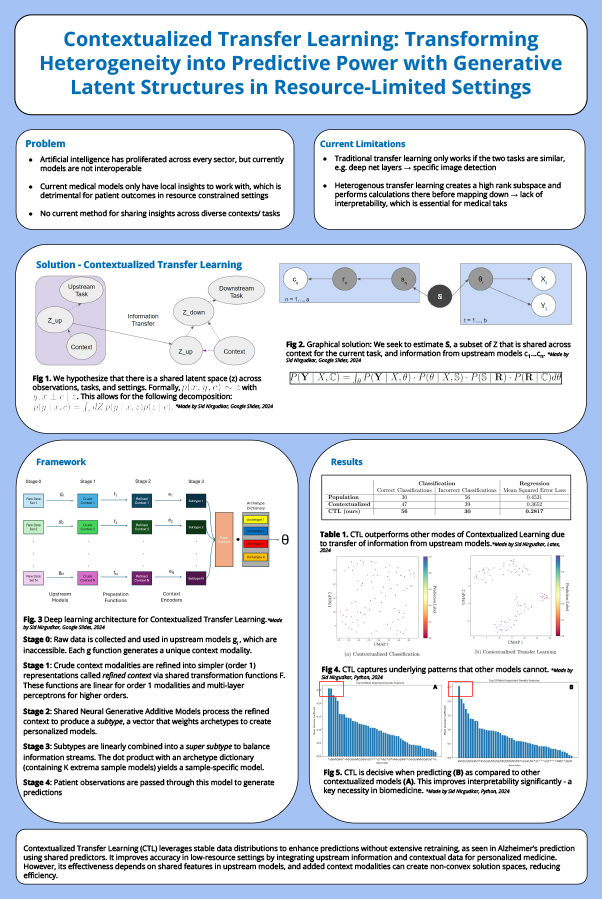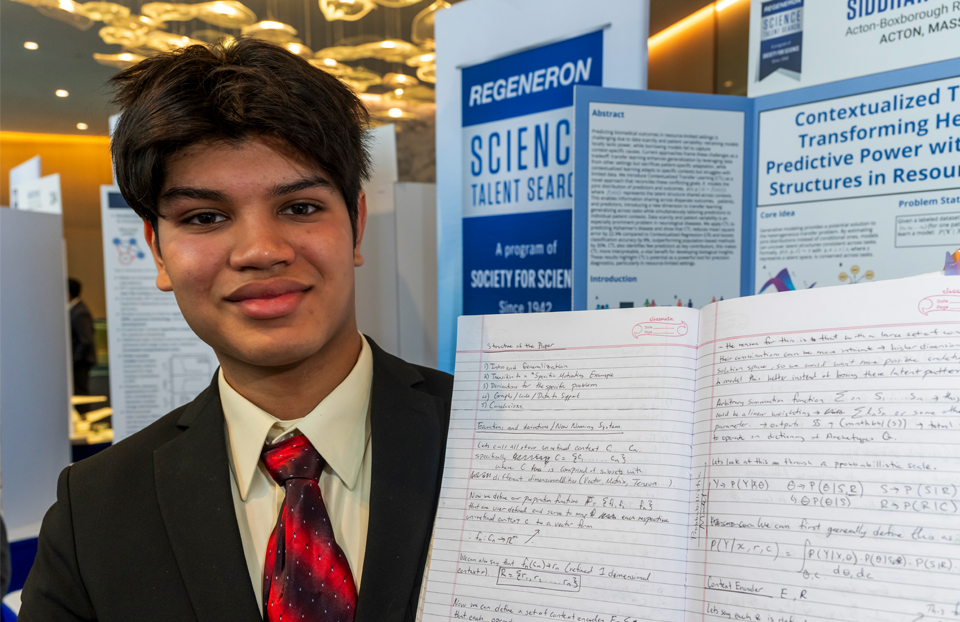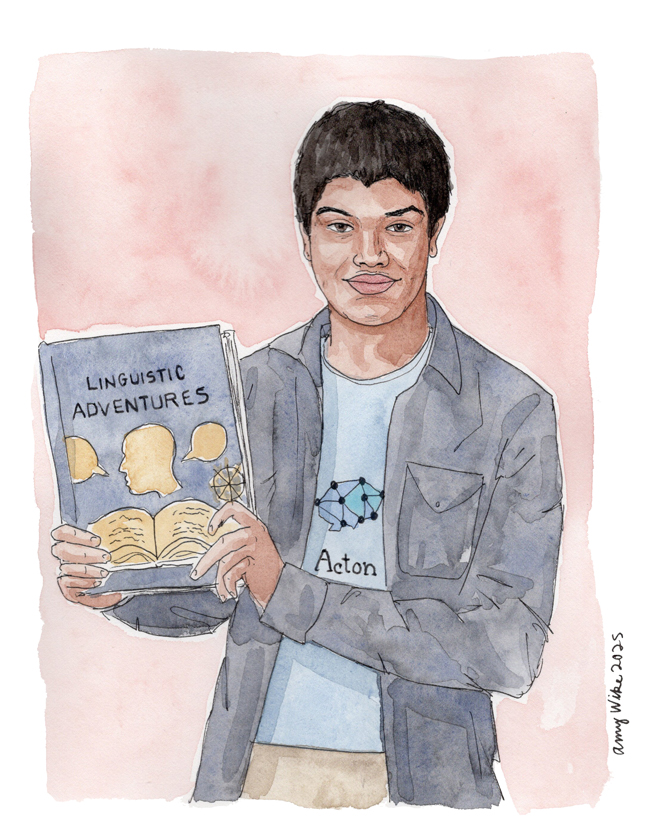Siddharth Nirgudkar
Acton-Boxborough Regional High School
Acton, Massachusetts
Contextualized Transfer Learning: Transforming Heterogeneity into Predictive Power with Generative Latent Structures in Resource-Limited Settings
Siddharth developed an AI approach called contextualized transfer learning (CTL). He used it to create a better AI-based tool to help doctors diagnose and treat diseases.
View Poster
Siddharth Nirgudkar, 17, of Acton, created a better way to diagnose disease from patient data for his Regeneron Science Talent Search computational biology and bioinformatics project. He used a new approach called contextualized transfer learning (CTL) to build an AI tool. AI diagnosis tools are not new, but current versions don’t work well in settings with scarce data and a diverse patient population. Current methods often struggle with individual cases. Others work well only when they have a lot of data available.
In his project, Siddharth used publicly sourced data to build the CTL model. His model allowed data to be shared across outcomes, cases and predictors. CTL uses an underlying layer, called a latent space, that captures patterns in the data and applies them to unique cases. In tests, his model was more accurate in diagnosing Alzheimer’s disease than other methods.

Siddharth, the child of Shailesh and Durga Nirgudkar, attends Acton-Boxborough Regional High School, where he mentors students in his school’s STEM research club. He also founded Acton Computational Linguistics to share his love of linguistics.

Beyond the Project
Siddharth developed a gun-tracking device to help prevent school shootings. It can alert schools and police to firearms near campus. He is the inventor of the patent for it.
FUN FACTS: Siddharth is fascinated by maps. He often opens up Google Earth to explore isolated, faraway locations. It makes him feel like Magellan.

